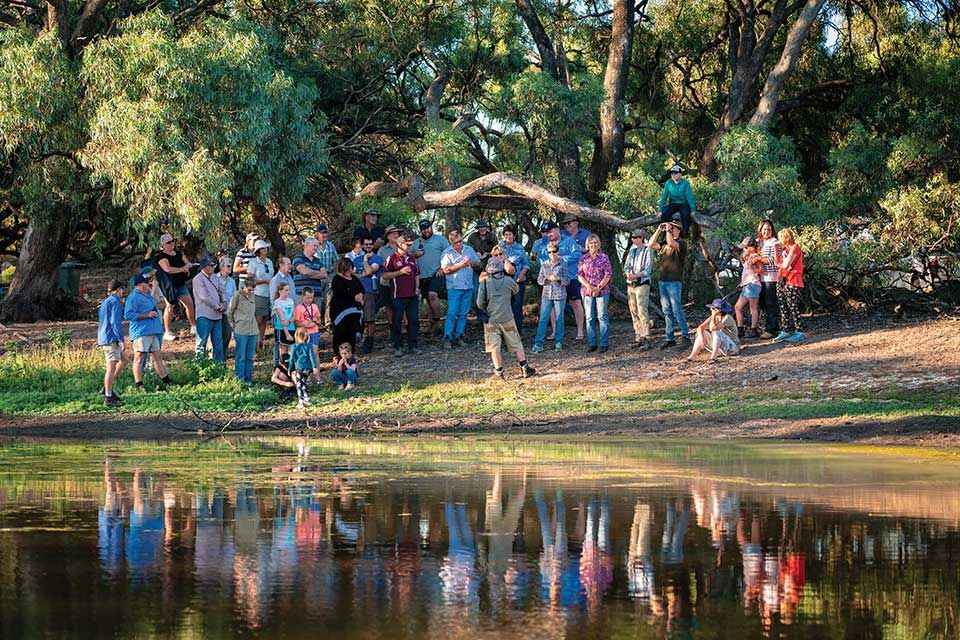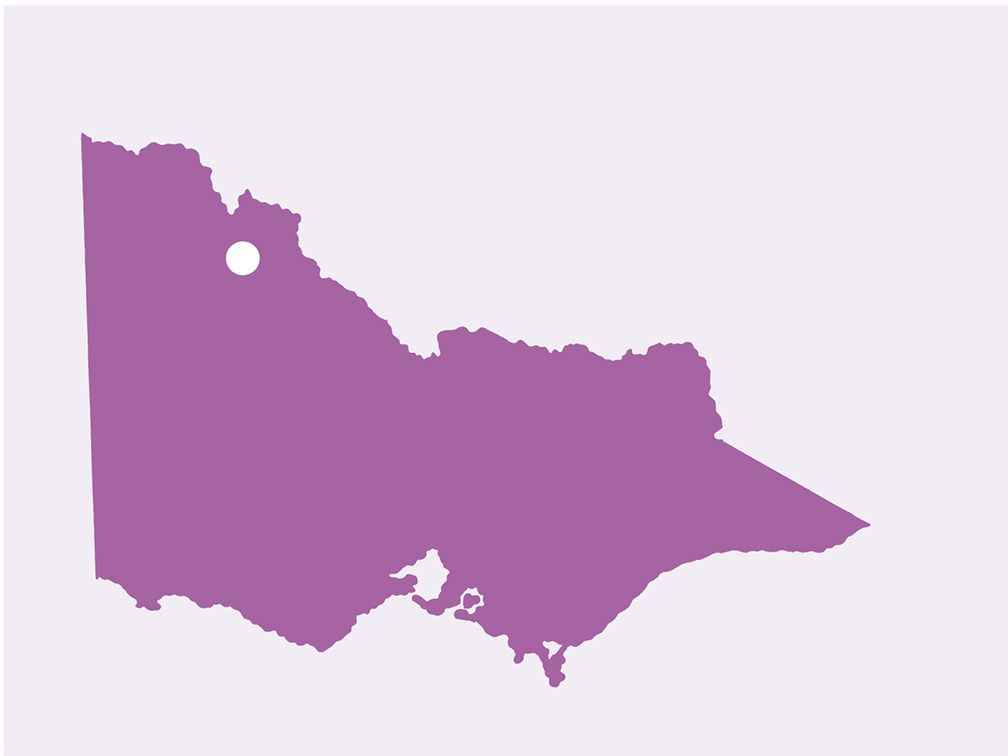Victorian Landcare Magazine - Summer 2023-24, Issue 86

Working in natural resource management for the past 30 years has provided me with many interesting experiences: managing a native seedbank in Swan Hill, meeting wombats while discussing river erosion with farmers in the upper Murray, befriending tiger ecologist John Goodrich while working with rangers in Laos on protected area management, becoming a novice historian, and working with entomologists to produce a cartoon pamphlet on golden apple snail for Filipino rice farmers. I’ve worked in state and local government, private industry, and with community groups.
In the end it’s always about the people. The people you meet, the people you help, and the people you work with. When I returned from living and working in Laos and the Philippines after seven years it took time to build relationships and connections in natural resource management.
I worked for 12 months facilitating two Landcare consortiums based in Birchip where I particularly enjoyed organising a wildlife spotlighting evening for the community at Uttiwillock Wetland, where we’d conducted a flora and fauna survey. More than 60 people turned up to hunt for night critters and learn about their habitats. It was a fantastic night. Introducing people to the wildlife that live in our remnant vegetation is key to encouraging its protection and enhancement.
In the end it’s always about the people. The people you meet, the people you help, and the people you work with.
For the past four years I have coordinated the Kooloonong-Natya Landcare Group. The group covers an area of over 113,500
hectares from Piangil to Boundary Bend on the Murray River. When Landcare started here in 1995 there were 44 farm businesses as members. Farms have become larger, and the number of people and businesses have reduced, but the passion for innovation and conservation remains.
Our local Field Naturalist Group based in Swan Hill has had many members from the Kooloonong-Natya area. Neil Macfarlane (deceased), Myf Macfarlane, Barry Wait, and many others were instrumental in lobbying for the proclamation of the Wandown Nature Conservation Reserve. John and Sheila Menzies played an important role in establishing Menzies Reserve. These reserves contain significant remnant native Mallee shrubland with many threatened species, including Malleefowl.
As a volunteer with the Victorian Malleefowl Recovery Group, Barry Wait and I checked mound activity in Menzies Reserve in early November 2022. We found one active mound but no birds. We figured they were probably hiding behind a bush chuckling at the two ungainly humans crashing through the scrub following a GPS bearing.
In recent years our Landcare members have worked on reducing pest plants and animals, improving biodiversity, providing training in occupational health and safety, chemical compliance, and mental health. The group is the only organisation that supports the interest of the environment and the people from Piangil to Boundary Bend. Our response to a challenge such as the recent floods will be determined and shaped by our members. When the water subsides, we will need to support our people to tackle the many post-flood challenges.
In 2018 the group chair, Alistair Murdoch, suggested we conduct oral history interviews to preserve Kooloonong-Natya’s stories and histories for perpetuity. The project has produced a book – Land of Plenty: A History of the Kooloonong-Natya Landcare Area by Adam McNicol. The book features contemporary photographs by Erin Jonasson and a treasure trove of archival material.
I’m very proud that we’ve made this book a reality. The book committee, led by Roger McQueen, were highly motivated to collect the stories of our older generation before they were lost. Writing and publishing a book is a complex project. We had to agree on what sort of book to write, try to include as many people in the book as possible, decide when to stop collecting information and start writing, find a publisher and raise money.
Vital early funding for the book was provided by the Mallee CMA, but most of the funds came from local farmers and businesses. Once the book was well underway Geraldine Murdoch set about bringing a committee and the community together to organise the Centenary Celebration weekend launch held in October 2022. The Public Records Office of Victoria funded a museum of memories for the launch and the weekend was a great success. Proceeds from the sale of the book will go towards Landcare projects and helping local farmers who have been affected by flooding.

Above: The Kooloonong-Natya Landcare Group executive, from left, Mark Kentish, Ian Edelsten, Alistair Murdoch, Rodney Hayden, Sue Pretty, Simon Craig, and Geoff Dawes.
Coordinating a Landcare group is not a nine-to-five job. Farmers work all hours, and they call me when they need to. I work from home so sometimes it can be difficult to get away from work. That said, I get a lot of satisfaction from the work and have met some remarkable people.
I am a particularly passionate exponent of direct seeding as a way of cheaply and easily revegetating large areas of native vegetation to improve biodiversity. We did a lot of it on our farm with great success. One of my priorities is to find ways to encourage more farmers to try it.
Given the urgent need to fix carbon, direct seeding can revegetate large areas. Carbon trading offers a tantalising opportunity for farmers to sequester carbon, improve biodiversity and get an income.
So much good work has been done on conservation in the area, but with biodiversity still declining this is an important opportunity to expand and connect remnant vegetation in our farming landscapes. This could be Landcare’s moment. I’m excited about what the future will bring.
Sue Pretty is Coordinator for Kooloonong-Natya Landcare Group. For more information email knatyalc@gmail.com
Copies of Land of Plenty: A History of the Kooloonong-Natya Landcare Area by Adam McNicol are available from www.tenbagpress.com.au

Above: